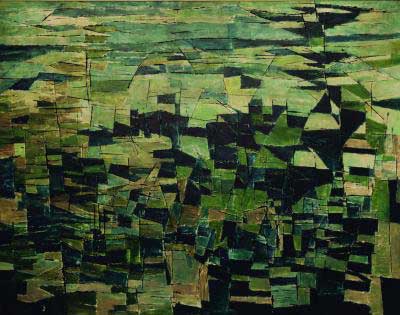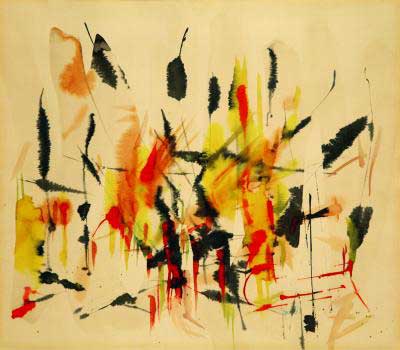In 1952, painter Alexandra Luke organized the first Canadian exhibition of abstract painting to be assembled on a national scale in Canada. In the brochure for the show, titled Canadian Abstract Exhibition, she wrote, "Painting should not stop with the already discovered beauty but continue searching."
Due to what the viewing public misunderstood as childish and insincere, abstract painting in Canada struggled to gain acceptance, especially in comparison to the nationally supported work of the Group of Seven, CP Rail's propagated images of the picturesque and traditional forms of landscape and portrait painting.

The abstract exhibition toured Canada in 1953, however it received mixed reviews. At a panel discussion at the Art Gallery of Toronto called Why Should We Buy Canadian Paintings?, writer and critic George Robertson suggested that department stores should be encouraged to sell original Canadian paintings using typical merchandising methods. Future Painters Eleven member William Ronald was in attendance, and his design work for the Robert Simpson Company prompted an exhibition of abstract and non-objective paintings at Simpson's department store. The subsequent show, titled Abstracts at Home, was meant to persuade the general public that abstract expressionist painting was just as much at home within the everyday as in an art gallery, and the exhibit featured works from various artists displayed in furnished rooms typical of modern living.

The promotion was a success for the store and the seven participating artists, resulting in a discussion to show their work together as a group. After agreeing to invite four other like-minded artists, it was decided that a meeting would take place at Luke's studio to discuss the idea of a large group exhibition of their works. At the historic meeting, Jack Bush, Oscar Cahen, Hortense Gordon, Tom Hodgson, Alexandra Luke, Jock Macdonald, Ray Mead, Kazuo Nakamura, William Ronald, Harold Town and Walter Yarwood decided to call themselves Painters Eleven, and from Feb. 12-28, 1954, at the Roberts Gallery in Toronto, the largest crowds ever drawn to the gallery viewed work from some of the most influential artists in history.
The Painters Eleven legacy lives on in the form of artwork now held in the University of Lethbridge Art Collection; an example of their influence and success. Unfortunately, after being acquired by the Hudson's Bay Company in 1978, the same cannot be said for Simpson's department store.

Chad Patterson
Museum Studies Intern, University of Lethbridge Art Gallery
This story first appeared in the Legend. To view the Legend in a flipbook format, follow this link.
